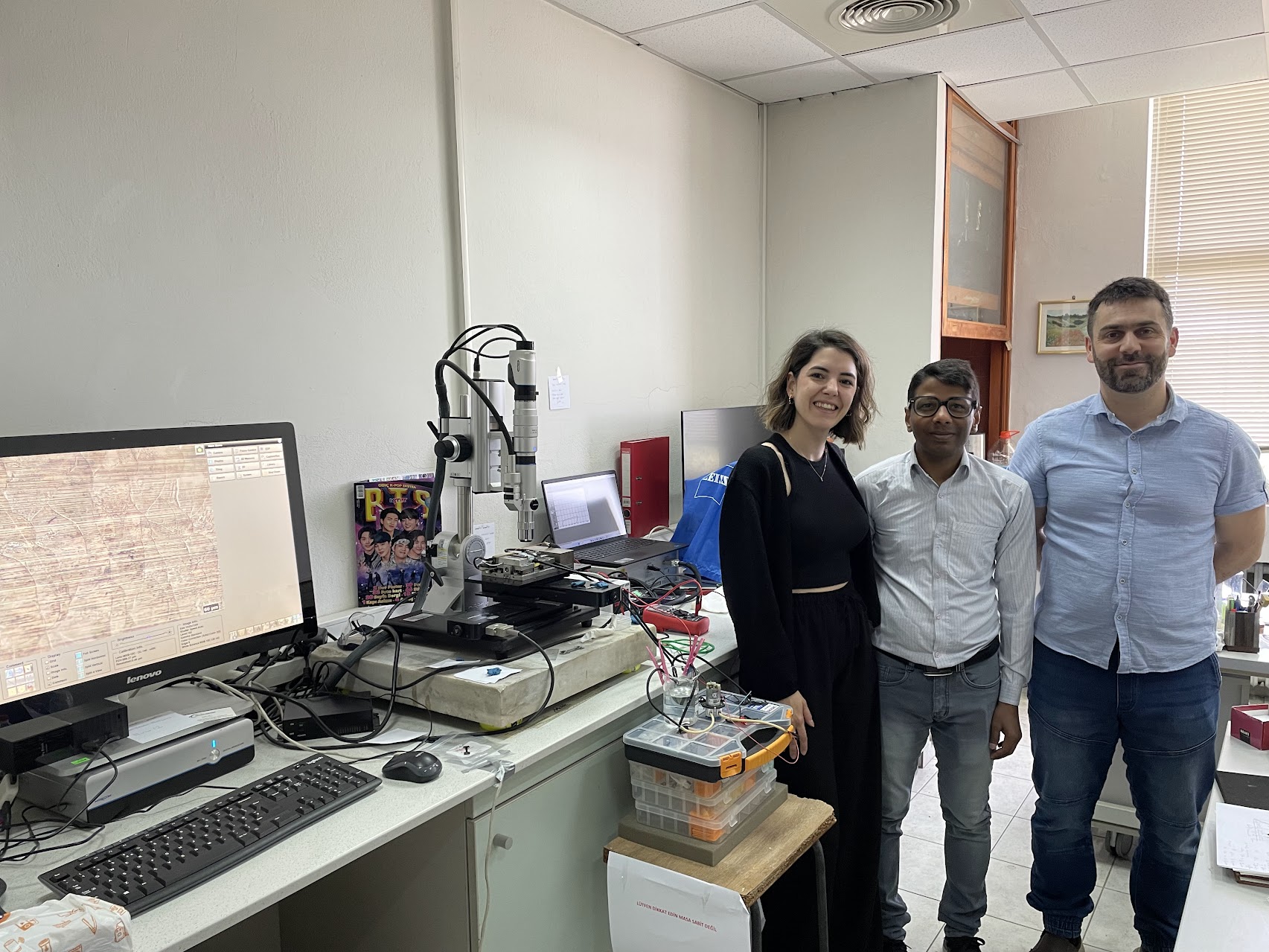In the realm of materials science and engineering, international collaboration and knowledge exchange play pivotal roles in advancing research and innovation. My recent research exchange at the Faculty of Chemical and Metallurgical Engineering, Istanbul Technical University (ITU) in Türkiye, was a testament to the profound impact of such collaborations. Over the course of one month, I had the privilege of working with esteemed professors, skilled researchers, and enthusiastic staff, delving into the intricate phenomenon of hydrogen embrittlement in additive manufactured stainless steel.
Siddharth Suman
Research Scientist, Ph.D.
VTT
My research focused on slow-strain rate testing combined with in-situ microstructure imaging during electrochemical hydrogen charging. This complex study aimed to unravel the mechanisms of hydrogen embrittlement, a critical issue in the durability and reliability of advanced stainless steel materials for hydrogen infrastructure. My hosts, Prof. Cem Örnek and Prof. Muhammet Kürşat Kazmanlı, provided invaluable guidance and expertise throughout my research journey. Their profound knowledge in the field and their dedication to fostering a collaborative research environment were instrumental in the success of my work.
Upon my arrival, I was warmly welcomed by Dean Prof. Sebahattin Gürmen. His support and enthusiasm for fostering international research collaborations were evident from the start. Dean Gürmen ensured that all logistical and administrative arrangements were seamlessly handled, allowing me to focus entirely on my research. His genuine hospitality and commitment to academic excellence set a positive tone for my entire stay.
The research facilities at ITU were state-of-the-art, equipped with cutting-edge technology essential for my experiments. The ability to conduct in-situ microstructure imaging during slow-strain rate testing and electrochemical hydrogen charging was crucial for obtaining accurate and insightful results. This sophisticated setup enabled us to observe the real-time effects of hydrogen ingress on the microstructure of additive manufactured stainless steel, providing a deeper understanding of the embrittlement mechanisms.
One of the most enriching aspects of my exchange was the overwhelming support and collaboration from the research staff, particularly Beste Payam. Their technical expertise, dedication, and willingness to assist at every step were remarkable. Beste’s proficiency in operating the advanced imaging equipment and meticulous approach to conducting electrochemical experiments significantly enhanced the efficiency and accuracy of our research. Their contributions were invaluable, and their camaraderie made the challenging research process enjoyable and productive.
Throughout my stay, the collaborative spirit at ITU was palpable. The faculty members and researchers were always eager to engage in insightful discussions, share their knowledge, and explore new ideas. This intellectual exchange was not confined to formal meetings and laboratory work; it extended to informal interactions over coffee, where brainstorming sessions often sparked innovative approaches to our research challenges.
Beyond the academic and research aspects, my time in Türkiye was enriched by the cultural experiences and the warm hospitality of the people. Exploring the vibrant city of Istanbul, with its rich history and cultural heritage, provided a perfect balance to the intense research activities. The warm and welcoming nature of the Turkish people, combined with the delectable cuisine and picturesque monuments, made my stay truly memorable.
I am confident that this collaboration will be long-lasting, paving the way for future joint research projects and furthering our mutual quest for scientific and engineering excellence. I am deeply grateful for this opportunity and look forward to future collaborations with the esteemed faculty and researchers at ITU.

